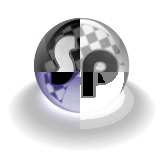Posts
Showing posts from August, 2008
D3DImage
- Get link
- X
- Other Apps
With .NET 3.5 SP1 RTM we get a new class called D3DImage this allows for Direct3D surface to act as a Image Checkput some of the samples that I found so far.. This is cool, check out D3DImage type sample by Dr. WPF in .NET 3.5 SP1, this opens up world of possibilities... Also check this code shows how to map Web Cam video onto a WPF Brush using D3DImage XNA meets WPF - by Jeremiah Morrill
Blending Modes in WPF using ShaderEffect's
- Get link
- X
- Other Apps

With the RTM of .NET 3.5 SP1 , we can now create hardware accelerated layer blending effects in WPF like those available in Image Editing tools & Photoshop & GIMP some of the common blending modes are Darken, Darker Colors preferred. sampler2D input : register(s0); sampler2D tex1 : register(s1); float4 main(float2 uv : TEXCOORD) : COLOR { float4 clr1; clr1= tex2D(tex1, uv.xy); float4 Color; Color= tex2D( input , uv.xy); if (Color.r>clr1.r) Color.r=clr1.r; if (Color.g>clr1.g) Color.g=clr1.g; if (Color.b>clr1.b) Color.b=clr1.b; return Color; } Lighten, Lighter Colors preferred. sampler2D input : register(s0); sampler2D tex1 : register(s1); float4 main(float2 uv : TEXCOORD) : COLOR { float4 clr1; clr1= tex2D(tex1, uv.xy); float4 Color; Color= tex2D( input , uv.x...
New Properties in ShaderEffect Class
- Get link
- X
- Other Apps
With .NET 3.5 RTM release today, I see that there are following new properties added to the ShaderEffect class. for setting the register index that contains the size of the image to which the effect is being applied to. documentation on web is complete with examples on this. int DdxUvDdyUvRegisterIndex For specifying the boundaries of the effect, this can be used to create glow like effects when so that the platform knows that the effect can determine output color outside the bounds of the UIElement. No Samples in the documentation. double PaddingBottom double PaddingLeft double PaddingRight double PaddingTop ShaderRenderMode property on PixelShader I shall be adding support for these in the ShaderPad shortly.
ShaderPad - WPF ShaderEffect's Workbench
- Get link
- X
- Other Apps

ShaderPad is a application like XamlPad / LinqPad , it is meant to server as WPF ShaderEffect Workbench. The ShaderEffect is a PixelShader based Effect that an be applied to any UIElement in WPF. This feature is available only in WPF 3.5 SP1 This release also includes the ability to animate the input variables that are passed to the ShaderEffect. This is a quick and dirty release :) , so expect some instability... In next release will add the ability to load effects from a common location on web, and save to web, this allow people to more freely share their effects. Pre Requisites .NET 3.5 SP1 : Download . Direct X SDK : Download June 2008 . Download the Releases and source code at CodePlex . Lookout for Effects releases soon.... Update: Example Blending Effects here
